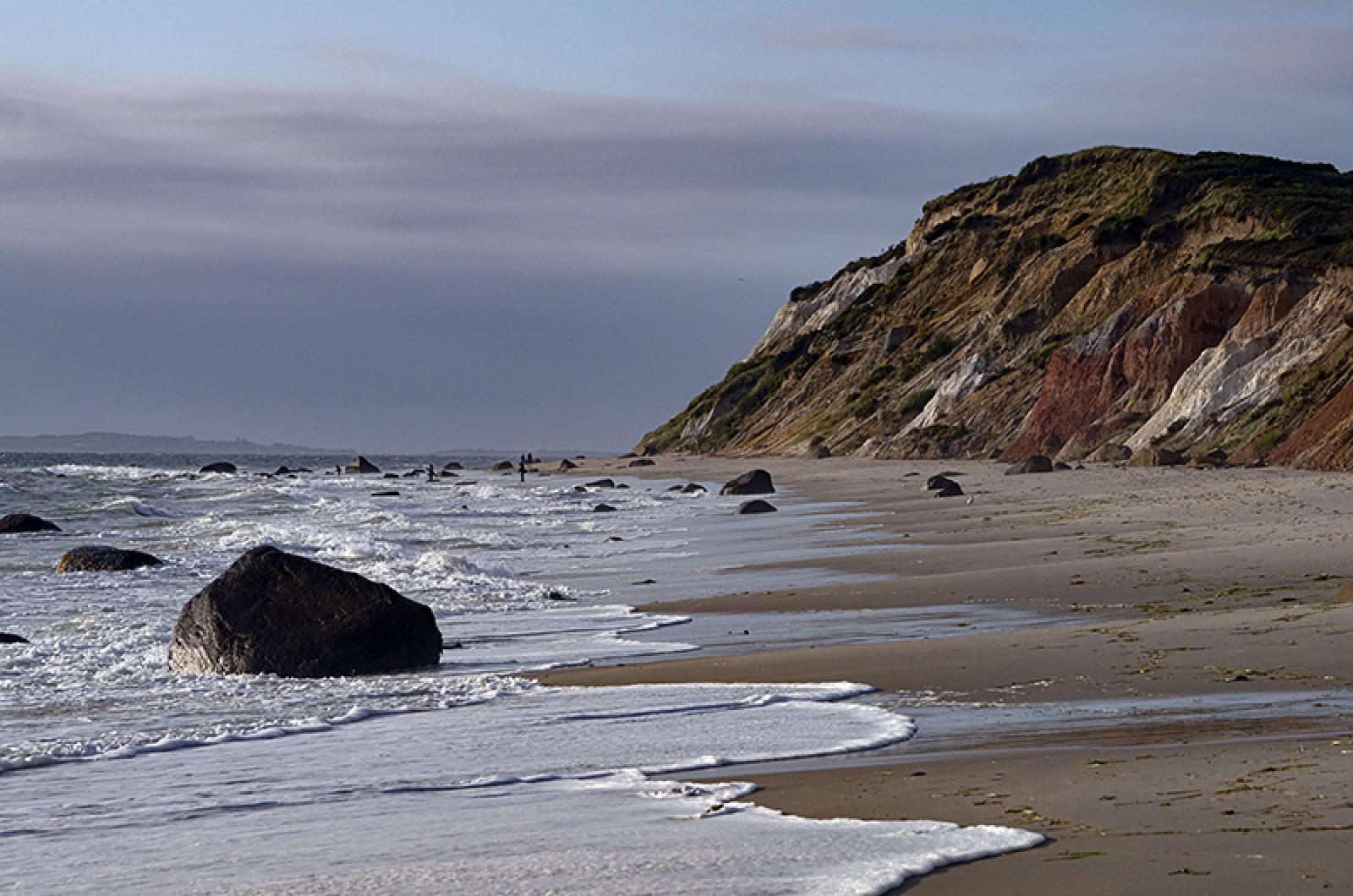Eight years ago I wrote a series for the Vineyard Gazette on the growing impacts of climate change on Martha’s Vineyard. At the time I was struggling to understand how a warming planet would affect this exposed little spit of land in the sea. I was educating myself as much as the community. Not many people were thinking about climate change back then, about how extreme weather and sea level rise would touch every aspect of Island life — the natural and built environments, our human health and the local economy.
Local climate threats have become more obvious. Hurricane Sandy in 2012 and three powerful northeasters in the winter of 2018, for example, caused severe erosion, road washouts and structural damage to homes and businesses, docks and harbors. Salt marshes could not contain the floodwaters. These days Five Corners is routinely underwater and intense rain brings inland flooding. Summers are getting hotter and drier while tick and pollen seasons expand. The warning signs are everywhere.
Flash to 2019 — there has been an explosion of climate-related Island activism. Busy young adults are carving out time to join climate action groups. Students are striking to raise awareness of how climate change threatens their future.
A few recent local projects may have helped inspire the new climate awareness.
In a dramatic display of tenderness and might, the Gay Head Light was moved 134 feet inland from an eroding cliff to keep it from toppling into the sea. An Islandwide effort saved the historic brick structure, a lifesaving beacon for generations of mariners. This is an example of managed retreat — moving out of harm’s way.
A creative public/private partnership at Squibnocket Beach resulted in another managed retreat project. A stone revetment was removed, the parking lot moved inland, a causeway built to protect access to a nearby neighborhood, and the town of Chilmark obtained the rights to an additional quarter mile of abutting beach. The original beach in front of the old parking lot was restored to its natural state with sand and beach grass.
In Oak Bluffs the crumbling North Bluff seawall was replaced with a new one, built four feet higher to address storm surge and sea level rise. A pedestrian boardwalk on top of it added open space value to the site. The seawall protects Sea View Avenue Extension, a major transportation hub between the Oak Bluffs harbor and the Steamship Authority wharf.
Vineyard Wind, in partnership with the Island energy cooperative Vineyard Power and others, is aiming to become the first commercial scale wind energy project in the United States. The wind farm, to be located 14 miles south of the Island, will provide renewable energy and local jobs.
There are two strategies for dealing with climate change: mitigation and adaptation. Mitigation is action that reduces greenhouse gas emissions, such as energy conservation, renewable energy, and land use practices that absorb and store carbon dioxide. Adaptation is action that reduces our vulnerability to climate impacts, like salt marsh restoration, stormwater management and managed retreat. Mitigation addresses the cause of climate change; adaptation addresses its impacts.
On the Island both strategies are necessary to increase our climate resiliency and our self-sufficiency. As the Island gets battered by coastal climate extremes, the rest of the planet will be struggling with even more severe climate consequences: millions of climate refugees, national and global security threats, and declines in food production and drinking water. We need local security, including our own sources of energy and food, a safe transportation system, homes protected from flooding and storm damage, and a self-sustaining Island economy.
Sometimes when I walk the shoreline I can almost see the future. Soundlessly, climate change is transforming the Island. The northeastern United States will be hotter, wetter and face higher sea level rise than the global average, while the Island is subsiding, or sinking. The impacts will be immense but we can’t let fear keep us from acting because we can make a difference. Not an optimist by nature, I am genuinely encouraged by the recent burst of local climate change activism.
The Island community has a choice to make. We can face the future in a state of chaos or we can plan with intelligence and insight for a peaceful climate transition. It will take commitment, perseverance, compromise, and even sacrifice to succeed, to build a future that protects our common good, the land and water, the people, our social fabric and our livelihoods.
Liz Durkee lives in Oak Bluffs.







Comments (1)
Comments
Comment policy »